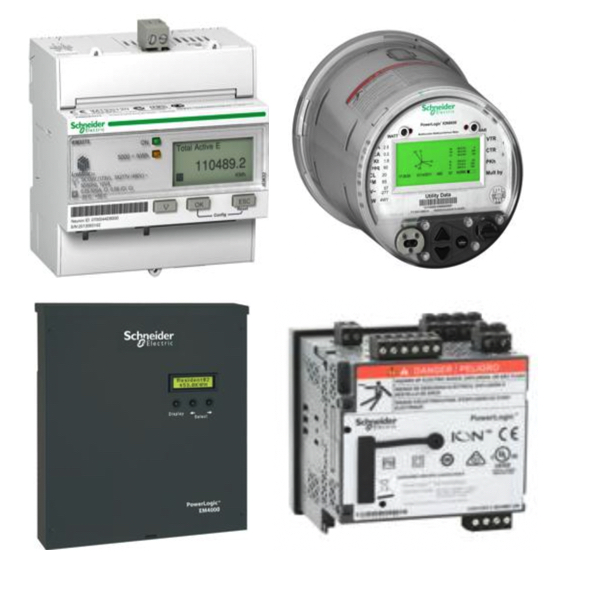Power & Energy Meters

Devices that measure power output and energy consumption in electrical systems are called power and energy meters. They provide the basic—but highly critical—data needed for optimizing energy use and improving energy efficiency. Power meters work by providing an accurate measurement of voltage, current, and power output in real time, which allows the user to see how an electrical device or system is performing at any given moment. Energy meters, by contrast, cumulate and express the total energy consumed over a certain period of time, usually in a form that is accessible and meaningful to the user.
Most power meters measure power in either single-phase or three-phase systems. Some models even allow for basic power measurements in four-wire systems. Because power calculations can become quite complicated, especially in installations with lots of nonlinear loads, energy meters help their users keep track of system performance. Most energy meters used in industrial, commercial, or residential faculties give a pretty clear account of how efficient a system is by measuring just how much energy is being consumed. This allows for some insight into not only energy usage but also potential energy savings and cost reductions.
How to Use a Multimeter
Measuring AC Voltage
Set the dial to the AC voltage symbol and plug the red probe into the voltage port. Place the red probe into the hot terminal block and the black probe into the neutral terminal block. Make sure the probes are fully seated to something that can conduct electricity, like the screws on the terminal blocks. The measurement is taken in parallel with the load.
Measuring DC Voltage
Set the dial to the DC voltage symbol and leave the probe in the same port as it was for the AC voltage measurement. Place the red probe to DC positive and the black probe to DC negative. The measurement is taken in parallel with the load.
Measuring Current or Amperage
Set the dial to either milliamps or amps. Move the red probe to the DC amp port. The multimeter is now set to measure DC current. Remove the wire that is sending power to the load and place one probe on one end and the other probe on the other, to complete the circuit, allowing power to bypass the load. The meter will break the circuit and measure the current in series with the voltage source. This allows the meter to measure the current that is going to the load.
Measuring resistance
Make sure that the load is disconnected from the electrical circuit, otherwise, the resistance measurement will not be accurate. Set the dial to the ohm symbol and place the red probe into the voltage port. Place one probe on one conductor and the other probe on the other. Take the reading.
Measuring Continuity
Meter settings stay the same as previous measurements, with the addition of pressing the audible button. Place the probes anywhere on the electrical circuit. An audible tone will sound if there is a continuous, point to point connection. If there is no sound, there is break in the electrical connection, possibly caused by broken or frayed wires.

